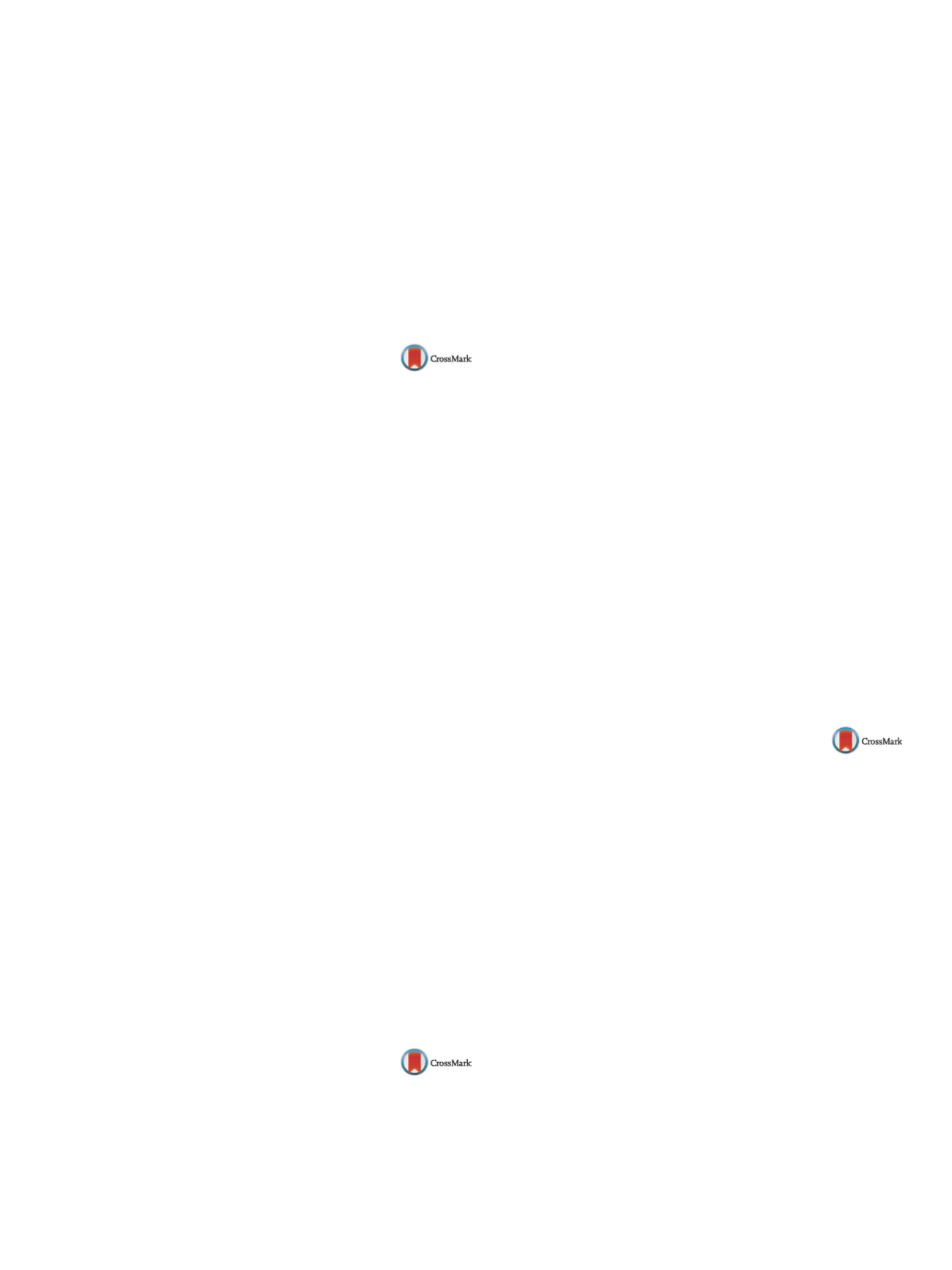

25th European congress of psychiatry / European Psychiatry 41S (2017) S365–S404
S385
explained. Scores on subscales “Similarities” and “Calculating” had
positive association with insight score. Model explains 24.7% of
variance. When model was adjusted on alpha 5% level of conclud-
ing only three significant positive predictors appears: higher level
of education, higher score on “Similarities” subscale, andbeingmar-
ried. Model explains 38.5% of variance.
Conclusion
Level of education andmarital status, among all other
factors, have important impact on level of insight in patients with
schizophrenia.
Keywords
Insight; Predictors; Education; Marital status
Disclosure of interest
The authors have not supplied their decla-
ration of competing interest.
http://dx.doi.org/10.1016/j.eurpsy.2017.02.422EW0809
Can neuropsychological testing
facilitate differential diagnosis
between at-risk mental state for
psychosis and adult attention deficit
hyperactivity disorder?
E. Studerus
University of Basel Psychiatric Hospital, Center for Gender Research
and Early Detection, Basel, Switzerland
Introduction
Patients with an at-risk mental state (ARMS) for
psychosis and patients with attention deficit hyperactivity disor-
der (ADHD) have many overlapping symptoms and hence can be
difficult to differentiate clinically.
Objectives
The aim of this study was to investigate whether the
differential diagnosis between ARMS and ADHD could be improved
by neuropsychological testing.
Methods
A total of 157 ARMS and 122 adult ADHD patients were
recruited via the Basel Früherkennung von Psychosen (FePsy) study
and the ADHD Special Consultations Unit of the University of Basel
Psychiatric Hospital, respectively. Verbal learning andmemorywas
tested with the California Verbal Learning Test (CVLT), sustained
attention with the Continuous performance test (CPT) and problem
solving abilities with the Tower of Hanoi task. Group differences in
neuropsychological performance were analyzed using generalized
linear models, which included age and gender as covariates.
Results
Adult ADHD patients recalled significantly fewer words
in the CVLT (both after short and long delay) and had significantly
more false alarms and omissions and longer reaction times in the
CPT than ARMS patients.
Conclusions
Adult ADHD patients show larger deficits than ARMS
patients in the domains of verbal memory and sustained atten-
tion, but not in problem solving abilities. This in line with current
meta-analyses, which found that impairments in the domains of
attention and verbal memory are of medium effect size in adult
ADHD patients and of small effect size in ARMS patients. Our
results suggest that measures of these domains can be exploited to
improve the differential diagnosis between adult ADHD and ARMS
patients.
Disclosure of interest
The author has not supplied his/her decla-
ration of competing interest.
http://dx.doi.org/10.1016/j.eurpsy.2017.02.423EW0810
Clozapine augmented with
risperidone in treatment-resistant
schizophrenia
G. Sulejmanpasic
1 ,∗
, S. Bise
21
Clinical, Psychiatric Clinic, Sarajevo, Bosnia and Herzegovina
2
Cantonal Psychiatric Hospital of Sarajevo, Clinical, Sarajevo, Bosnia
and Herzegovina
∗
Corresponding author.
Introduction
The evolution of various pharmacological therapies
for schizophrenia has given rise to several pharmacological models
for the neuroreceptor targets of antipsychotics and the influence of
various neuroreceptors on specific symptoms and side effects.
Objectives
Experience in clinical practice affirms clozapine’s
position as the treatment of choice for patients with treatment-
refractory schizophrenia. Unlike clozapine, risperidone has a
more targeted profile of neurotransmitter binding, with particular
predilection for dopamine and serotonin receptors. Risperidone is,
to date, the most extensively documented clozapine augmentation
agent.
Aim
The aim was to evaluate clinical efficacy, safety and toler-
ability of augmenting clozapine with risperidone in patients with
treatment-resistant schizophrenia.
Methods
In a randomized, double-blind, placebo-controlled 8-
week trial, 10 patients unresponsive or partially responsive to
300mg/day of clozapine monotherapy (
n
= 5) received a steady
dose of 450mg/day clozapine combined with or up to 4mg/day
of risperidone (
n
= 5). Patient psychopathology was assessed at 2-
week intervals with the Brief Psychiatric Rating Scale (BPRS), the
Scale for the Assessment of Negative Symptoms (SANS) and Clinical
Global Impression (CGI) improvement scale.
Results
From baseline to week 4 and week 8, mean BPRS total
and positive symptom subscale scores were reduced significantly
in both groups, but the reductions were significantly greater with
clozapine/risperidone treatment. Reductions in SANS scores were
also significantly greater with clozapine/risperidone treatment
than with clozapine monotherapy group. Clozapine/risperidone
treatment did not induce additional weight gain or agranulocytosis
compared with clozapine monotherapy treatment.
Conclusions
Clozapine augmentationwith risperidone appears to
be well tolerated, safe and may provide additional clinical benefit
for patients who are nonresponsive or only partially responsive to
clozapine alone.
Disclosure of interest
The authors have not supplied their decla-
ration of competing interest.
http://dx.doi.org/10.1016/j.eurpsy.2017.02.424EW0811
The association of schizophrenia
symptoms clusters with obsessive
compulsive symptoms
E. Theochari
1 ,∗
, E. Tsaltas
2, D. Kontis
31
Psychiatric Hospital of Attica “Dromokaiteio”, Tarsi, Athens
Chaidari, Greece
2
Athens University Medical School, Experimental Psychology
Laboratory, 1st Department of Psychiatry, Athens, Greece
3
Psychiatric Hospital of Attica, Cognitive Rehabilitation Unit, Athens,
Greece
∗
Corresponding author.
Introduction
Thirty percent of individuals with schizophrenia
demonstrate obsessive compulsive symptoms (OCSs). There is con-
flicting data on the effects of antipsychotic medication on OCSs
in schizophrenia. The delineation of the relationship of OCSs with
positive, negative and general psychopathology symptoms has the-
oretical and treatment implications.
Objectives
To investigate the relationship among OCSs with the
symptoms clusters in schizophrenia.
Methods
We recruited 110 chronic schizophrenia patients and
assessed OCSs (Yale-Brown Scale) and schizophrenia symptoms
(Positive and Negative Syndrome Scale). In order to investigate
the relationship of OCSs with clusters of schizophrenia symptoms,
we conducted correlation analyses between YBOCS total scores
or obsession or compulsion subscores with the PANSS symptoms
scores (total, positive, negative and general psychopathology) and
the cognitive scores derived from CANTAB. We re-conducted these


















